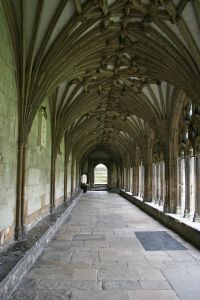 Over the course of the seventeen years that I have been in school, I have never taken any summer classes. Well, my streak is over. Not only am I taking classes right now, I’m taking 9 hours worth. That’s a hefty load to carry during the summer.
Over the course of the seventeen years that I have been in school, I have never taken any summer classes. Well, my streak is over. Not only am I taking classes right now, I’m taking 9 hours worth. That’s a hefty load to carry during the summer.
I started my seminary career with the goal of finishing my M. Div. in three years. In order to do that, I have to take no less than 15 hours a semester (not including summers).
My first semester (Fall ’08) I only took 9 hours, which was done in order to help me transition back into the classroom. I took 15 hours in the spring, which then put me in a spot to have to take two classes (6 hours) in order to get back on track.
Just after my two classes began at the end of May, I happened to notice another class being offered during the same session that sounded very interesting. It was an upper level theology class entitled Theology of Intentional Christian Communities. I also noticed the class didn’t start until the 8th of June and that it was only to span just four weeks. That meant meeting two days a week for five hours each day.
I immediately wrote our Admissions Director requesting to get into this class (the class hadn’t started yet). She quickly responded and told me that I was registered and good to go. I bought the books for the class and prepared to start the following week.
Now, having completed the class, I must say that I am exceedingly glad that I was able to add this into my schedule. Not only did I greatly appreciate the class and learned a lot, but I am now ahead of schedule and can look forward to having a future semester with only 12 hours.
We started off in the class reading through St. Benedict’s Rule. We then read Ivan Kauffman’s Follow Me: A History of Christian Intentionality (2009); Rutba House ed. School(s) for Conversion: 12 Marks of a New Monasticism (2005); Jon Stock, Tim Otto, Jonathan Wilson-Hartgrove, Inhabiting the Church: Biblical Wisdom for a New Monasticism (2007); and Jonathan Wilson-Hartgrove’s New Monasticism: What It Has to Say to Today’s Church (2008).
For those of you not familiar with these books and/or authors, they are the leading voices of a movement being called “new monasticism.” If one were interested in knowing more about this movement, the book above, School(s) for Conversion: 12 Marks of a New Monasticism, would be a good place to start. (You could also click here to check out their website.)
The reason I took this class lies in my personal experience and desire to want to live out my faith within the context of an intentional community. By this I mean a community of people who are truly committed to one another and God, seeking daily God’s kingdom and his righteousness.
As we read through the Scriptures we are reminded that these words of God were given to a people, not a person. As one digs deeper and starts to consider the implications of certain imperatives, we find that the majority of them are designed to be lived out in the context of a community. Thus, they are hard, if not impossible, to obey in the life of an individual.
Having taken this class and gleaning from the sources we studied, I know for certain that there is a lot of good that is to be said about living out the gospel of God in a real community of believers. I’m thankful that I was able to be a part of this particular class and look forward to seeing and hearing more about what develops within and around this modern day movement called “new monasticism.”
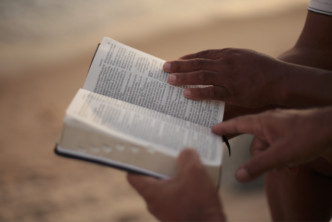
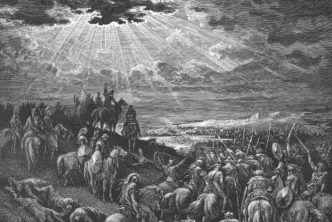
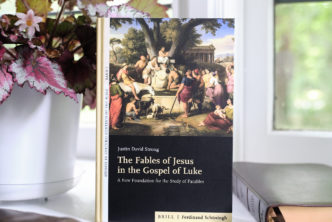
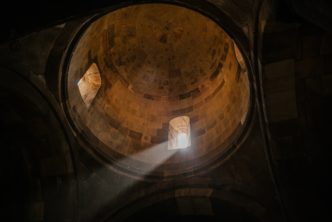
Glad you discovered that Judaism and then the development of it called Christianity is communal and not about individuals (only);
why Rome emphasizes the Church (all believers, as the Body of Christ) – by the way I’m not RC;
and also monasticism. Something that existed since the first few centuries in the Syrian and Egyptian deserts. Just Google for Desert Fathers (and Mothers), to read some of their special insights.
And if interested in monasticism, history, practices, info, news, we have (had for a long time) and inter-denominational list of about 450 members, for monastic subjects at http://groups.yahoo.com/group/monasterion
John (monk)
i’m glad to hear talk about intentional Christian community. isn’t that what the local church is supposed to be? isn’t that the assembly of believers for doing life together in worship of our great God? since when do we have to look elsewhere to cultivate that? i would that we love and help reform the Bride of Christ, instead of trying to replace her.
Hey Walt. Yeah, I agree that doing life together as an assembly of believers not only facilitates a right biblical witness, but ultimately brings glory to the God of Heaven. I’m not sure what you mean, however, by looking elsewhere to cultivate that. Nor do I understand what you mean of “trying to replace” the Bride of Christ.
Ah, got ya. Thanks for the clarification, Walt. I believe that it is always healthy to remain a part of the larger body of believers, which can take different forms in various places. Being a part of a local church is a good thing.
I appreciate the thoughts you’ve shared.
blessings.